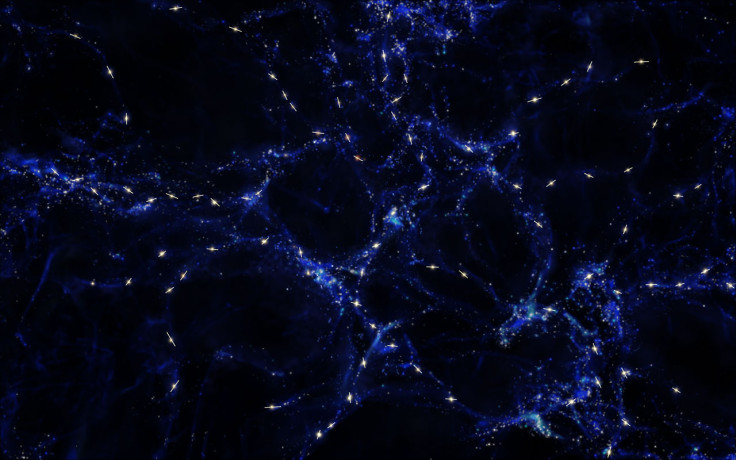Galaxies in Mysterious Sync With Each Other Across Billion Light Years

Something seems to be at work across billions of light-years in connecting and aligning distant black holes and quasars to each other.
The rotation axes of the black holes and the quasars housing them seem to be in strange alignment with others across wide stretches of space.
In some cases the rotation axes of distant quasars were aligned to each other and to the structure of the universe at larger scales than predicted by models.
Observations with ESO's Very Large Telescope (VLT) in Chile by a team led by Damien Hutsemékers at the University of Liège in Belgium suggest there is something missing from the present models that attempt to explain the cosmos.
The team looked at 93 quasars that were known to form huge groupings spread over billions of light-years at a time when the universe was a third of its present age.

The large-scale structure
Quasars are galaxies with very active supermassive black holes at their centres. These black holes that spin very fast often eject hot material in long jets along their axes of rotation.
The distribution of galaxies on scales of billions of light years are not evenly distributed but form a cosmic web of filaments and clumps around huge voids where galaxies are scarce.
This is the large-scale structure to which the rotation axes of quasars and their black holes were found to be aligned with.
The probability that this alignment happened by chance is less than 1% say the researchers.
The correlation of the quasars and the universal structure is an important prediction of numerical models on the evolution of the universe.
© Copyright IBTimes 2025. All rights reserved.





















